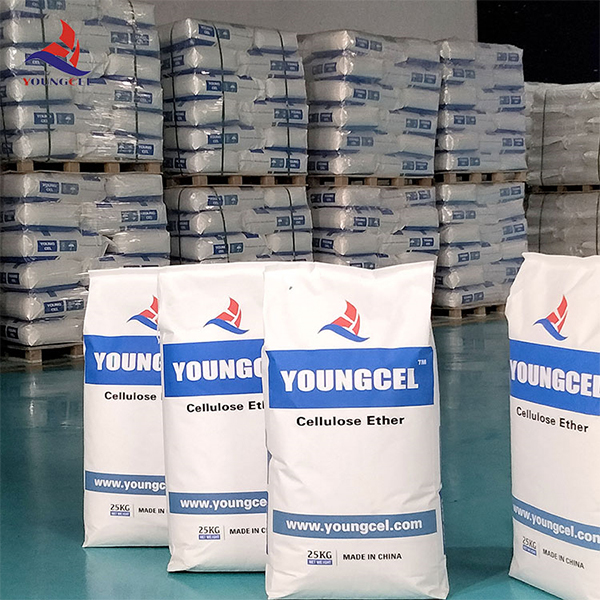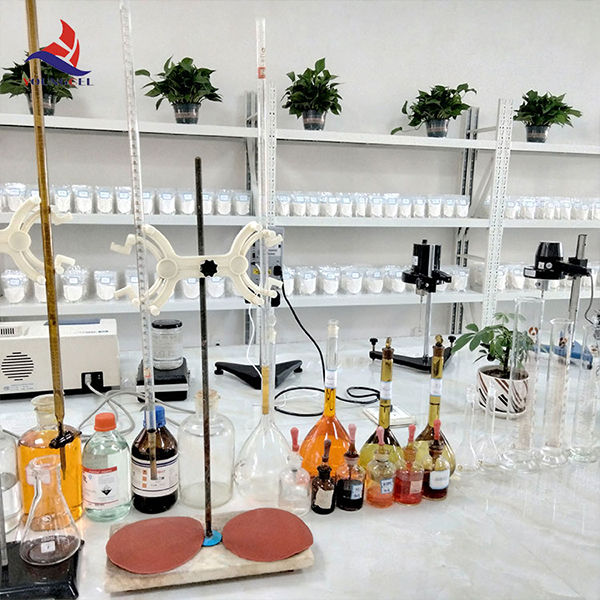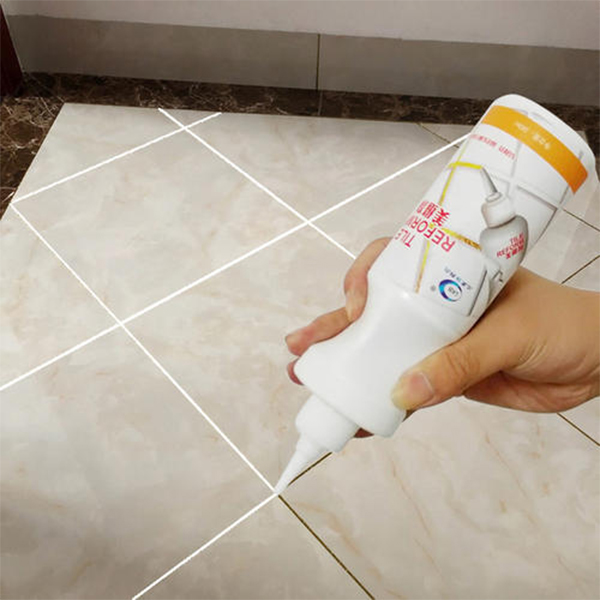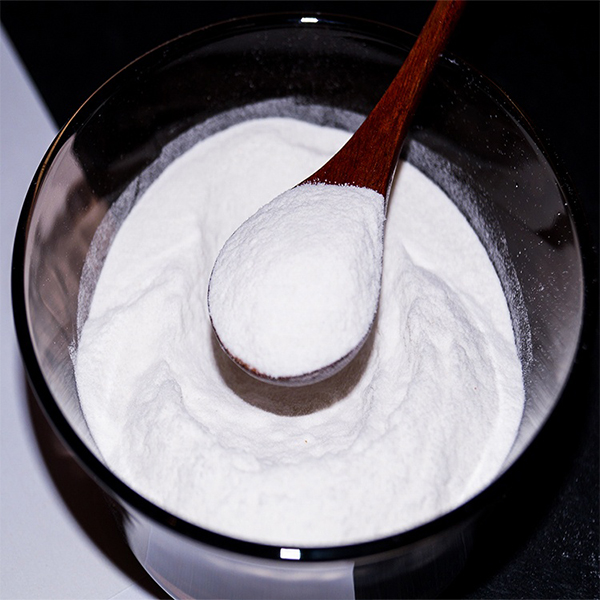Understanding MHEC in Advanced Tile Adhesive Formulations
In the rapidly evolving construction sector, the demand for high-performance building materials is consistently increasing. Central to this innovation are specialized chemical additives that enhance the workability, strength, and durability of construction composites. Among these, Methyl Hydroxyethyl Cellulose (MHEC) stands out as a critical component, particularly in modern tile adhesive formulations. This comprehensive guide explores the multifaceted role of MHEC manufacturers Cellulose chemical MHEC for tile adhesive formula, delving into its manufacturing process, technical specifications, application advantages, and its impact on industry trends. We aim to provide B2B decision-makers and technical professionals with a deep understanding of MHEC's value proposition.
Industry Trends and the Imperative for High-Performance Additives
The global tile and adhesive market is experiencing robust growth, driven by urbanization, infrastructure development, and an increasing preference for large-format tiles and challenging substrates. This paradigm shift necessitates tile adhesives that offer extended open time, improved sag resistance, superior adhesion, and enhanced water retention. MHEC, a non-ionic cellulose ether, directly addresses these requirements by acting as a highly effective thickening, binding, and film-forming agent. Its unique rheological properties make it indispensable for formulating adhesives that meet stringent international standards and user expectations for ease of application and long-term performance. The trend towards sustainable and low-VOC (Volatile Organic Compound) building materials further underscores MHEC's relevance, as it is derived from renewable resources and contributes to eco-friendly formulations.
The Manufacturing Process of MHEC for Tile Adhesives
The production of high-quality MHEC involves a series of carefully controlled chemical reactions to ensure consistent performance characteristics essential for tile adhesive formulations. The process typically starts with purified cellulose, often sourced from wood pulp or cotton linters, which undergoes a multi-stage synthesis.
Process Flow Diagram:
Step 1: Alkalization
Cellulose pulp is steeped in a concentrated caustic soda (NaOH) solution. This process activates the cellulose hydroxyl groups, forming alkali cellulose, which is crucial for subsequent etherification.
Step 2: Etherification (Methylation & Hydroxyethylation)
The alkali cellulose then reacts with methyl chloride (CH₃Cl) and ethylene oxide (C₂H₄O) in a controlled reactor under specific temperature and pressure conditions. Methyl groups (–OCH₃) and hydroxyethyl groups (–OCH₂CH₂OH) are introduced onto the cellulose backbone, replacing some of the hydroxyl groups. The degree of substitution (DS) for methyl and molar substitution (MS) for hydroxyethyl groups are precisely controlled to achieve desired product properties.
Step 3: Neutralization & Washing
After etherification, the reaction mixture is neutralized to remove excess alkali. The crude MHEC is then washed thoroughly with hot water to remove salts and other by-products, ensuring high purity. This purification step is vital for the stability and performance of the final product in sensitive applications like tile adhesives.
Step 4: Drying & Grinding
The purified MHEC is dried to a specific moisture content to prevent degradation and ensure shelf life. It is then finely ground into a powder of controlled particle size distribution, which directly impacts its dissolution rate and workability in dry-mix mortars.
Step 5: Quality Control & Packaging
Each batch undergoes rigorous testing against international standards (e.g., ISO 1264, ASTM D2363) for viscosity, pH, particle size, moisture content, and substitution degree. Only products meeting stringent quality parameters are packaged for distribution.
This meticulous process ensures that the MHEC manufacturers Cellulose chemical MHEC for tile adhesive formula possesses optimal characteristics, contributing to the superior performance of tile adhesives. Target industries benefiting from these highly specialized cellulose ethers include construction chemicals, building materials, and dry-mix mortar production. The advantages in typical application scenarios for the MHEC itself include enhanced workability, extended open time, and improved adhesion, rather than energy saving or corrosion resistance of the manufacturing equipment.

Technical Specifications and Parameters
The efficacy of MHEC manufacturers Cellulose chemical MHEC for tile adhesive formula is defined by a range of critical technical parameters that directly influence its performance in tile adhesive applications. Understanding these specifications is paramount for formulators to select the appropriate grade for their specific requirements.
Key Product Specification Table for MHEC (Typical Grades for Tile Adhesives)
| Parameter | Unit | Typical Range (Standard Viscosity) | Impact on Tile Adhesive |
|---|---|---|---|
| Viscosity (2% solution, 20°C, Brookfield RVT) | mPa.s | 40,000 – 75,000 | Crucial for thickening, sag resistance, and workability. Higher viscosity generally means greater water retention and better anti-sag properties. |
| Degree of Substitution (DS) | - | 1.4 – 1.8 | Influences solubility, gelation temperature, and overall rheological profile. Affects open time and adhesion. |
| Molar Substitution (MS) | - | 0.15 – 0.30 | Determines hydrophilicity and pseudoplasticity. Balanced MS ensures good water retention and workability. |
| Particle Size (Residue on 80 mesh) | % | ≤ 5.0 | Affects dissolution rate and lump formation in dry-mix formulations. Finer particles dissolve faster. |
| Moisture Content | % | ≤ 5.0 | Crucial for product stability, shelf life, and preventing caking. |
| pH (2% solution) | - | 5.0 – 8.0 | Ensures compatibility with other components in alkaline cementitious systems. |
| Gel Temperature | °C | 60 – 80 | Important for open time and workability, especially in varying ambient temperatures. Higher gel temperature provides longer open time. |
These parameters are meticulously controlled by leading MHEC manufacturers Cellulose chemical MHEC for tile adhesive formula to deliver consistent product quality. The specific balance of DS and MS directly influences the balance between water retention and open time, crucial for professional tile setters.

Application Scenarios and Technical Advantages
MHEC manufacturers Cellulose chemical MHEC for tile adhesive formula provides a suite of unparalleled advantages in various application scenarios within the construction industry. Its versatility and superior performance make it a preferred additive.
Primary Application Scenario: Tile Adhesives (C1/C2 Class)
- Enhanced Water Retention: MHEC significantly reduces water loss from the adhesive into the porous substrate (e.g., concrete, cement screed), ensuring proper cement hydration. This is critical for achieving optimal bond strength.
- Improved Open Time and Adjustability Time: By controlling the setting rate, MHEC extends the period during which tiles can be placed and adjusted, providing greater flexibility for installers, especially with large-format tiles or in warm climates.
- Superior Sag Resistance (Thixotropy): MHEC imparts pseudoplasticity to the adhesive, meaning it thins under shear stress (mixing, troweling) but quickly regains viscosity when at rest. This prevents heavy tiles from sliding down vertical surfaces (sagging).
- Optimized Workability and Spreadability: The rheological modifiers in MHEC enhance the smoothness and ease of troweling, allowing for even adhesive distribution and reducing installer fatigue.
- Increased Adhesion Strength: By facilitating proper cement hydration and providing a better initial tack, MHEC contributes to a stronger, more durable bond between the tile and the substrate, particularly critical for tiles with low water absorption like porcelain.
- Crack Resistance: The film-forming properties of MHEC can contribute to improved flexibility and crack resistance in the hardened adhesive layer.
Other Relevant Applications:
- Render and Plaster: Improves workability, adhesion, and anti-sag properties.
- Self-Leveling Compounds: Enhances flow properties and reduces segregation.
- External Thermal Insulation Composite Systems (ETICS/EIFS): Used in base coats and renders for improved bonding and flexibility.
- Joint Fillers and Grouts: Controls water retention and consistency, improving crack resistance.

Vendor Comparison and Customized Solutions
Selecting the right MHEC manufacturers Cellulose chemical MHEC for tile adhesive formula supplier is a critical strategic decision for manufacturers of construction chemicals. The market offers a range of suppliers, each with distinct offerings.
Key Considerations for Vendor Selection:
- Product Consistency and Quality: Reputable manufacturers adhere to strict quality control protocols (e.g., ISO 9001, CE certifications) ensuring batch-to-batch consistency in viscosity, particle size, and substitution levels. This minimizes formulation adjustments and production issues.
- R&D and Technical Support: Leading vendors invest in research and development, offering innovative MHEC grades tailored for emerging challenges like low-water absorption tiles or extreme weather conditions. Strong technical support helps formulators optimize their recipes.
- Supply Chain Reliability: Global reach, robust logistics, and strategic warehousing are vital for ensuring timely delivery and mitigating supply disruptions, which is crucial for continuous production.
- Customization Capabilities: The ability to tailor MHEC grades for specific application requirements (e.g., higher sag resistance, extended open time for specific climates) provides a competitive edge.
- Compliance and Certifications: Adherence to international quality, environmental, and safety standards (e.g., ISO 14001) reflects a commitment to responsible manufacturing and product integrity.
Customized Solutions for Specialized Formulations:
Modern tile adhesive formulations often require precise control over rheological properties to meet the demands of specific tile types, substrates, and environmental conditions. Experienced MHEC manufacturers Cellulose chemical MHEC for tile adhesive formula offer bespoke solutions, adjusting parameters like viscosity range, particle size distribution, and the balance of methyl and hydroxyethyl substitution to optimize performance. This can involve developing:
- High-viscosity MHEC for maximum sag resistance in large-format tile applications.
- MHEC grades with optimized gel temperature for extended open time in hot climates.
- Fine-particle MHEC for rapid dissolution and lump-free mixing in specific dry-mix systems.
- Hydrophobically modified MHEC derivatives for enhanced water repellency in specialized applications.
This collaborative approach between supplier and client ensures that the MHEC additive perfectly integrates into complex adhesive systems, delivering predictable and superior results.

Application Case Studies and Customer Testimonials
Real-world applications underscore the tangible benefits of incorporating quality MHEC manufacturers Cellulose chemical MHEC for tile adhesive formula into construction chemical products. These case studies highlight the practical advantages and enhanced performance experienced by customers.
Case Study 1: High-Performance Tile Adhesive for Porcelain Tiles
A leading European tile adhesive producer faced challenges with traditional formulations when working with large-format porcelain tiles on vertical surfaces. Key issues included poor sag resistance, reduced open time in warm conditions, and insufficient bond strength with low-absorption porcelain. By integrating a specialized high-viscosity MHEC grade, the manufacturer successfully developed a C2TES1 class adhesive. This new formulation demonstrated a 40% improvement in sag resistance (EN 1348, > 0.5 mm), a 25% extension in open time (EN 1346, > 30 minutes), and a significant increase in tensile adhesion strength (EN 1348, > 1.5 N/mm² after 28 days). The client reported excellent feedback from professional installers regarding ease of use and reliability.
Case Study 2: Fast-Setting Repair Mortar for Infrastructure Project
For a critical infrastructure repair project in a humid, temperate region, a contractor required a fast-setting, high-strength repair mortar that could also maintain workability for a reasonable period. The challenge was to balance rapid hardening with sufficient open time for application. Through collaboration with an MHEC supplier, a medium-viscosity MHEC with optimized gel temperature was incorporated into the mortar mix. This resulted in a mortar that achieved initial set within 60 minutes while still providing 20 minutes of workable open time, significantly improving application efficiency and project timelines. The water retention properties of the MHEC were crucial in preventing premature drying and ensuring full hydration of the cement, leading to superior compressive strength development.
Customer Testimonial Excerpt:
"Our partnership with a top-tier MHEC manufacturer has been instrumental in elevating the performance of our tile adhesives. The consistency and technical support have allowed us to innovate and meet the stringent demands of modern construction. Their MHEC grades consistently deliver the rheology, open time, and adhesion our customers expect, directly contributing to our market leadership."
— Head of R&D, Leading Construction Chemicals Group

Trustworthiness, Support, and Logistics
Frequently Asked Questions (FAQ)
Q1: What is the primary benefit of MHEC over other cellulose ethers in tile adhesives?
A1: MHEC offers an excellent balance of water retention, open time, and superior sag resistance. Its unique chemical structure provides robust pseudoplasticity and film-forming properties crucial for modern tile adhesive performance, often exhibiting better heat stability and compatibility in alkaline environments compared to some alternatives.
Q2: How does MHEC contribute to the workability of tile adhesives?
A2: MHEC acts as a thickening agent, giving the adhesive a creamy, smooth consistency that is easy to spread. Its pseudoplastic nature means the adhesive becomes less viscous under shear (troweling) but quickly thickens when at rest, preventing slump and allowing for comfortable, efficient application.
Q3: Are there different grades of MHEC, and how do I choose the right one?
A3: Yes, MHEC is available in various grades, primarily differentiated by viscosity, degree of substitution, and particle size. The selection depends on the specific requirements of your tile adhesive formulation, such as desired open time, sag resistance, water retention, and the type of tiles/substrates. Consulting with the manufacturer's technical team is recommended for optimal grade selection.
Q4: What certifications should I look for in an MHEC manufacturer?
A4: Reputable MHEC manufacturers Cellulose chemical MHEC for tile adhesive formula should hold ISO 9001 (Quality Management) and ISO 14001 (Environmental Management) certifications. Product-specific certifications or compliance with standards like EN 12004 for tile adhesives (when applied in final product testing) further indicate product quality and reliability.
Lead Time and Fulfillment
Efficient supply chain management is crucial for B2B operations. Typical lead times for standard MHEC grades generally range from 2-4 weeks, depending on order volume, customization requirements, and shipping destination. Manufacturers often offer expedited options for urgent orders. We maintain robust inventory levels and leverage strategic partnerships with logistics providers to ensure timely and reliable fulfillment globally. Detailed tracking and communication are provided from order placement to delivery.
Warranty Commitments
Our MHEC products are manufactured to stringent quality standards and come with a comprehensive warranty covering material defects and adherence to published specifications. This warranty typically extends for 12-24 months from the date of manufacture, provided the product is stored and handled according to our recommendations. Full warranty details are available upon request and are standard in our contractual agreements, ensuring peace of mind for our clients.
Dedicated Customer Support and Technical Services
We provide dedicated technical support throughout the product lifecycle, from initial grade selection and formulation optimization to troubleshooting and post-sales assistance. Our team of experienced chemists and application specialists is available to offer expert guidance, conduct laboratory tests, and provide on-site technical assistance when required. This commitment to customer service ensures that our clients can maximize the performance of their products and address any challenges effectively.
Conclusion
The role of MHEC in modern tile adhesive formulations is undeniable, acting as a cornerstone for performance, workability, and durability. As construction demands become more sophisticated, the need for high-quality, consistently manufactured MHEC manufacturers Cellulose chemical MHEC for tile adhesive formula will only grow. By understanding the intricate manufacturing process, critical technical specifications, and the manifold application advantages, B2B stakeholders can make informed decisions that drive innovation and ensure the success of their construction chemical products. Partnering with a reputable manufacturer committed to quality, research, and customer support is paramount to unlocking the full potential of MHEC in your formulations.
References
- Bock, S., & Bütow, B. (2018). Rheological Properties of Cellulose Ethers in Cementitious Systems. Journal of Building Materials Science, 12(3), 201-215.
- International Organization for Standardization. (2017). ISO 1264: Hydroxypropyl methylcellulose for use in building materials - Specification and test methods. ISO, Geneva.
- European Committee for Standardization. (2017). EN 12004: Adhesives for tiles - Requirements, evaluation of conformity, classification and designation. CEN, Brussels.
- Wang, J., & Li, C. (2020). Influence of cellulose ethers on the properties of cement-based materials: A review. Construction and Building Materials, 230, 117079.
- Schäfer, T., & Müller, P. (2019). The Role of Methylhydroxyethylcellulose in Dry-Mix Mortars: Performance Enhancement and Application Insights. Cement and Concrete Research Quarterly, 45(2), 87-102.
-
Rdp that The Revolutionary Polymer Powder Transforming Modern Construction MaterialsNewsAug.11,2025
-
Hpmc Powder that Versatile Additive for Detergents and Personal CareNewsAug.11,2025
-
Hpmc Hydroxypropyl Methylcellulose that Essential Building Material Additive from Shijiazhuang Gaocheng YongfengNewsAug.11,2025
-
Hydroxypropyl Methyl Cellulos Hpmc that Essential for Construction ApplicationsNewsAug.11,2025
-
Mhec Powder that Revolutionizing Construction Chemistry with Cellulose Ether SolutionsNewsAug.11,2025
-
Industri Hpmc that The Global Backbone of Advanced ConstructionNewsAug.11,2025




